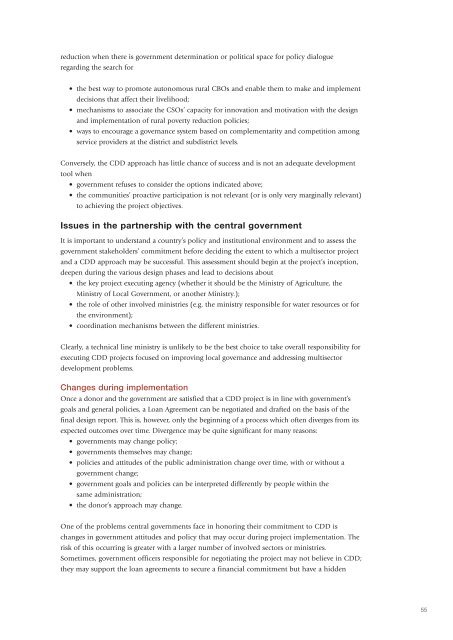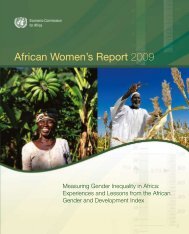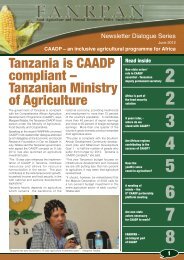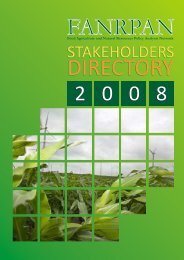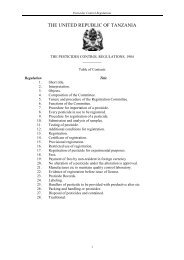Community-driven development decision tools for rural - IFAD
Community-driven development decision tools for rural - IFAD
Community-driven development decision tools for rural - IFAD
- No tags were found...
Create successful ePaper yourself
Turn your PDF publications into a flip-book with our unique Google optimized e-Paper software.
eduction when there is government determination or political space <strong>for</strong> policy dialogueregarding the search <strong>for</strong>• the best way to promote autonomous <strong>rural</strong> CBOs and enable them to make and implement<strong>decision</strong>s that affect their livelihood;• mechanisms to associate the CSOs’ capacity <strong>for</strong> innovation and motivation with the designand implementation of <strong>rural</strong> poverty reduction policies;• ways to encourage a governance system based on complementarity and competition amongservice providers at the district and subdistrict levels.Conversely, the CDD approach has little chance of success and is not an adequate <strong>development</strong>tool when• government refuses to consider the options indicated above;• the communities’ proactive participation is not relevant (or is only very marginally relevant)to achieving the project objectives.Issues in the partnership with the central governmentIt is important to understand a country’s policy and institutional environment and to assess thegovernment stakeholders’ commitment be<strong>for</strong>e deciding the extent to which a multisector projectand a CDD approach may be successful. This assessment should begin at the project’s inception,deepen during the various design phases and lead to <strong>decision</strong>s about• the key project executing agency (whether it should be the Ministry of Agriculture, theMinistry of Local Government, or another Ministry.);• the role of other involved ministries (e.g. the ministry responsible <strong>for</strong> water resources or <strong>for</strong>the environment);• coordination mechanisms between the different ministries.Clearly, a technical line ministry is unlikely to be the best choice to take overall responsibility <strong>for</strong>executing CDD projects focused on improving local governance and addressing multisector<strong>development</strong> problems.Changes during implementationOnce a donor and the government are satisfied that a CDD project is in line with government’sgoals and general policies, a Loan Agreement can be negotiated and drafted on the basis of thefinal design report. This is, however, only the beginning of a process which often diverges from itsexpected outcomes over time. Divergence may be quite significant <strong>for</strong> many reasons:• governments may change policy;• governments themselves may change;• policies and attitudes of the public administration change over time, with or without agovernment change;• government goals and policies can be interpreted differently by people within thesame administration;• the donor’s approach may change.One of the problems central governments face in honoring their commitment to CDD ischanges in government attitudes and policy that may occur during project implementation. Therisk of this occurring is greater with a larger number of involved sectors or ministries.Sometimes, government officers responsible <strong>for</strong> negotiating the project may not believe in CDD;they may support the loan agreements to secure a financial commitment but have a hidden55


